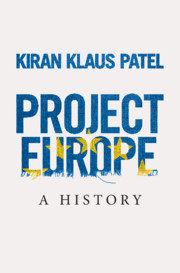Book contents
- Project Europe
- Project Europe
- Copyright page
- Contents
- Figures, Maps and Tables
- Abbreviations
- Frontispiece
- Prologue
- 1 Europe and European Integration
- 2 Peace and Security
- 3 Growth and Prosperity
- 4 Participation and Technocracy
- 5 Values and Norms
- 6 Superstate or Tool of Nations?
- 7 Disintegration and Dysfunctionality
- 8 The Community and Its World
- Epilogue
- Acknowledgements
- Notes
- Bibliography
- Index
1 - Europe and European Integration
Published online by Cambridge University Press: 24 April 2020
- Project Europe
- Project Europe
- Copyright page
- Contents
- Figures, Maps and Tables
- Abbreviations
- Frontispiece
- Prologue
- 1 Europe and European Integration
- 2 Peace and Security
- 3 Growth and Prosperity
- 4 Participation and Technocracy
- 5 Values and Norms
- 6 Superstate or Tool of Nations?
- 7 Disintegration and Dysfunctionality
- 8 The Community and Its World
- Epilogue
- Acknowledgements
- Notes
- Bibliography
- Index
Summary
These days ‘Europe’ is assumed to mean the European Union and Brussels. The majority of European states are part of the EU, and its various policies have a profound impact on its member states and the international system. It is therefore easy to equate Europe with the European Union, or at least with international cooperation in Europe. This chapter argues that such an approach is problematic, particularly from a historical perspective. It underestimates two aspects: firstly, the European Community as the EU’s predecessor was a fragile latecomer in a densely populated field of international organisations. Seventy years ago (and more recently too) it appeared rather unlikely that this particular organisation would one day come to be identified with Europe as a whole. And secondly, the integration process was not only shaped by the histories of the participating states and the general historical context, but also influenced by a veritable web of relationships with other Western European organisations and transnational forums. Europe was never just the EU, and the EU never all of Europe. So we need to understand how that equivalence became so strong and how the EC was able to morph from humble origins into Europe’s pre-eminent international entity.
Keywords
- Type
- Chapter
- Information
- Project EuropeA History, pp. 13 - 49Publisher: Cambridge University PressPrint publication year: 2020

